Querying Appsync With Python
AWS AppSync
AWS AppSync is a really easy way to quickly assemble a GraphQL API to interact with data from DynamoDB, Lambda, ElasticSearch, RDS, or other HTTP endpoints.
You don’t have to create an API Gateway, then fiddle around with hooking it up with DynamoDB mappings, or lambdas in the middle. You define a data model, queries, and mutations, and AppSync provides an endpoint for you to query it. Hell it’ll even go off and create the DynamoDB for you if you use the wizard.
This spike was my first interaction with GraphQL full stop as I’ve always historically worked with JSON APIs, so in this I’m not going to assume you know anything about GraphQL (as I sure as shit don’t!).
GraphQL vs REST
There are a billion different articles on the pros and cons, but the short answer is that GraphQL provides a lot of flexibility in what data
Setting up AppSync
I chose to start using the Wizard without a sample project so I could build it up myself to understand it better.

Let’s create a very simple data structure to list our favourite movies.
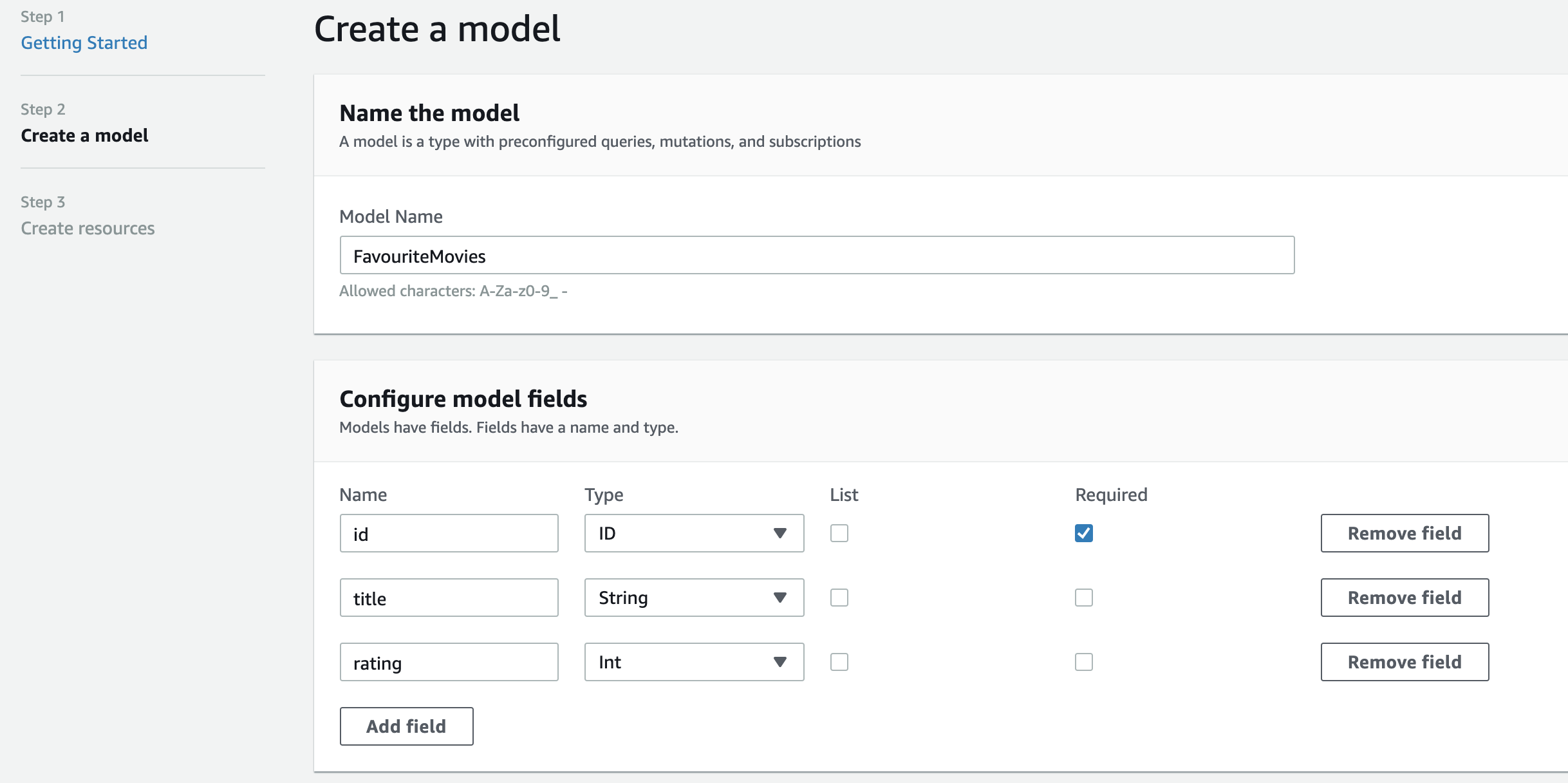
Name it

Done! Now we can query it! In the background AWS went off and created an API Endpoint, DynamoDB Table, and a bunch of GraphQL definitions to define how we’re allowed to query the API.
It’s now dumped us at the Query page, which is a nice way to get started.
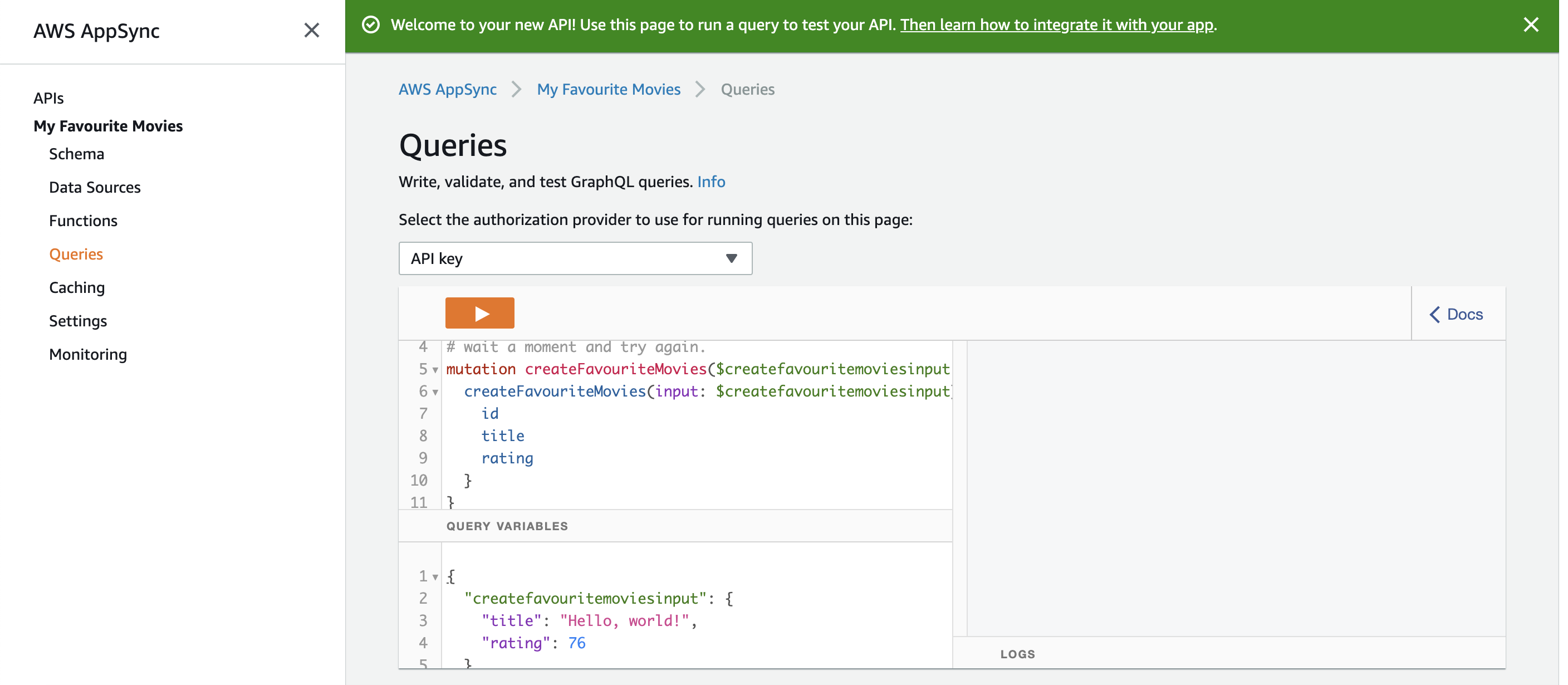
Go ahead and click the orange Play button to createFavouriteMovies. Some dummy data will then appear on the right hand side as the API response to our create request.
You can now hit play again, and hit listFavouriteMovies (it will look identical however because we only have the one record for now!).
Now we need to figure out how to query the API outside AWS though!
Querying AppSync with Python
You’ve probably noticed the message in green at the top which invites you to “learn how to integrate [your new API] with your app.", which takes you to this page.
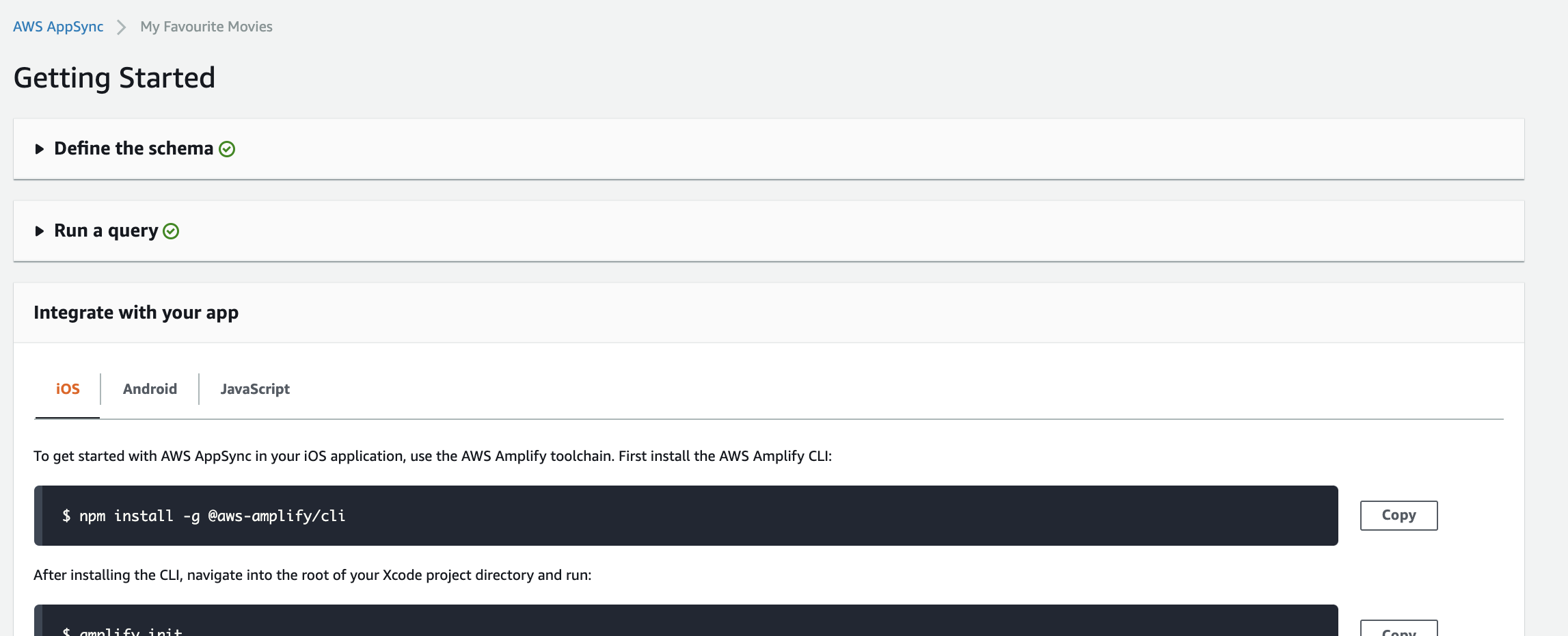
Which.. uh.. doesn’t have a lot of Python on it. Appsync is pretty Web and Mobile oriented and offers some great features to this effect such as websockets and offline data management in React. We don’t care about any of that though! We want Python!
Go to the Settings section and you’ll find what you need to get started.
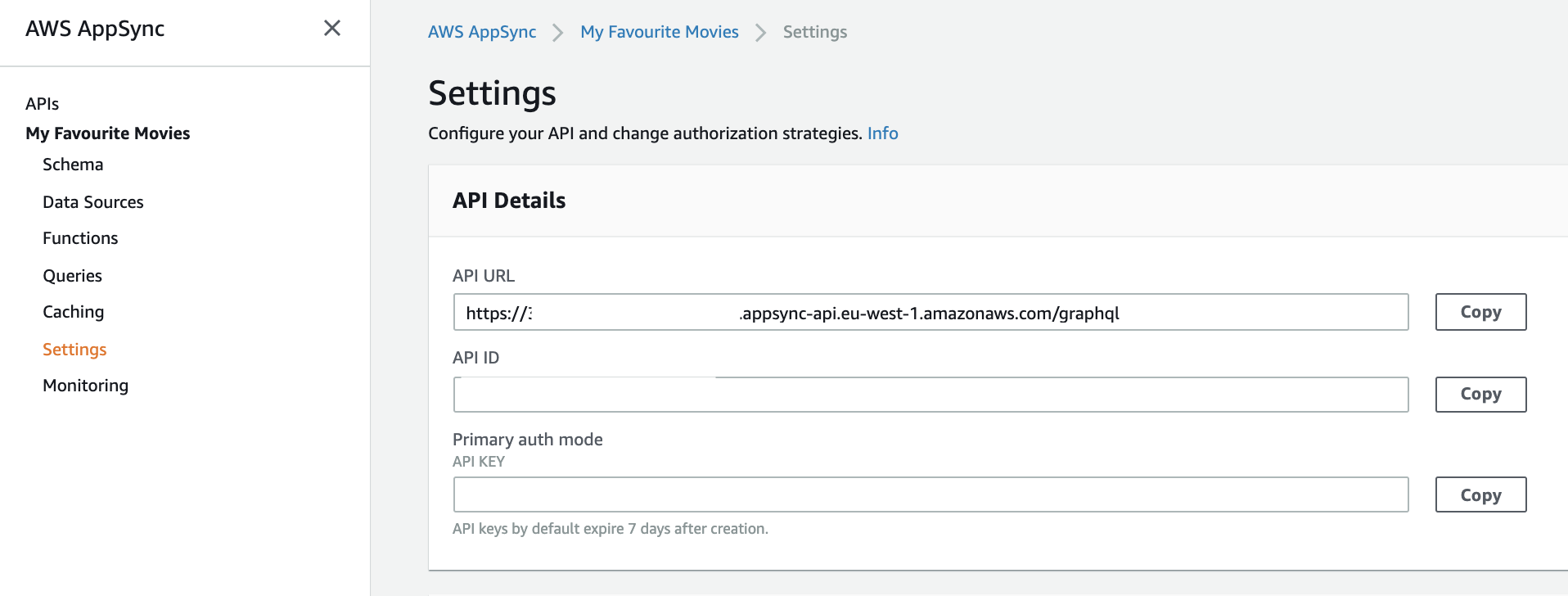
Make a note of:
- API URL
- API Key
and open up your favourite Python editor and throw in:
from urllib import request
from datetime import datetime
import simplejson
class GraphqlClient:
def __init__(self, endpoint, headers):
self.endpoint = endpoint
self.headers = headers
@staticmethod
def serialization_helper(o):
if isinstance(o, datetime):
return o.strftime('%Y-%m-%dT%H:%M:%S.000Z')
def execute(self, query, operation_name, variables={}):
data = simplejson.dumps({
"query": query,
"variables": variables,
"operationName": operation_name
},
default=self.serialization_helper,
ignore_nan=True
)
r = request.Request(
headers=self.headers,
url=self.endpoint,
method='POST',
data=data.encode('utf8')
)
response = request.urlopen(r).read()
return response.decode('utf8')
gq_client = GraphqlClient(
endpoint='https://xxxxxxxx.appsync-api.eu-west-1.amazonaws.com/graphql',
headers={'x-api-key': 'xxx-xxxxxxxxxxxxxxx'}
)
result = gq_client.execute(
query="""
query listFavouriteMovies {
listFavouriteMovies {
items {
id
title
rating
}
}
}
""",
operation_name='listFavouriteMovies'
)
print(result)
Replacing the endpoint and x-api-key values with your endpoint URL and API key.
Prior to running the script you’ll need to install simplejson with pip install simplejson, but after that you should be able to do:
$ python AppSyncExample.py
{"data":{"listFavouriteMovies":{"items":[{"id":"35ef6587-9c8b-4e2e-95f9-453108eb4b04","title":"Hello, world!","rating":76}]}}}
Beautiful! We’ve successfully queried our GraphQL API from Python!
The boilerplate class GraphqlClient does some of the stuff (and is named identically) to the python-graphql-client library, but it’s easier to see what’s going on without installing and calling a 3rd party plugin. We’re using simplejson because the AppSync GraphQL API doesn’t get on with some of the more complex JSON values like NaN so we strip them out.
Running a Insert Operation.
We’ve done a query, now let’s write something.
Delete everything between the triple quotes in the result = gq_client.execute(query= call and replace it with a new GraphQL call, a mutation:
mutation createFavouriteMovies($createfavouritemoviesinput: CreateFavouriteMoviesInput!) {
createFavouriteMovies(input: $createfavouritemoviesinput) {
id
title
rating
}
}
This provides the structure for inserting our record. Now we need to add the variables as an additional argument in the same execute method call.
variables={
"createfavouritemoviesinput": {
"title": "Thor: Ragnarok",
"rating": 10
}
}
Note the top level key createfavouritemoviesinput which corresponds to the arg we’re passing to the createFavouriteMovies mutation.
We also need to update the operation_name param to be createFavouriteMovies.
Once you’re done it should look like:
result = gq_client.execute(query= """
mutation createFavouriteMovies($createfavouritemoviesinput: CreateFavouriteMoviesInput!) {
createFavouriteMovies(input: $createfavouritemoviesinput) {
id
title
rating
}
}
""",
operation_name='createFavouriteMovies',
variables={
"createfavouritemoviesinput": {
"title": "Thor: Ragnarok",
"rating": 10
}
}
)
And running it should give you:
$ python AppSyncExample.py
{"data":{"createFavouriteMovies":{"id":"a4c007e9-b0f4-45d3-816d-8c9acaef259d","title":"Thor: Ragnarok","rating":10}}}
Beautiful!
Now If you swap the call back to the original listFavouriteMovies query we started off with, you should get both results back!
$ python AppSyncExample.py
{"data":{"listFavouriteMovies":{"items":[{"id":"6456c73f-6e72-43e4-b432-01ea7fe85448","title":"Thor: Ragnarok","rating":10},{"id":"35ef6587-9c8b-4e2e-95f9-453108eb4b04","title":"Hello, world!","rating":76}]}}}
There’s so much more you can do with AppSync, and honestly the some of coolest features are the AWS owned client libraries for React and React Native that do client side caching for offline data and optimistic submissions.
Query Creation
I highly recommend the Insomnia tool to make your life easier when writing GraphQL queries. It allows you to browse the schema, gives you autocomplete. Flags missing/incomplete fields, etc.
Once you’ve installed it, create a new query

Then pop to headers and populate your credentials

Then you can refresh the schema.
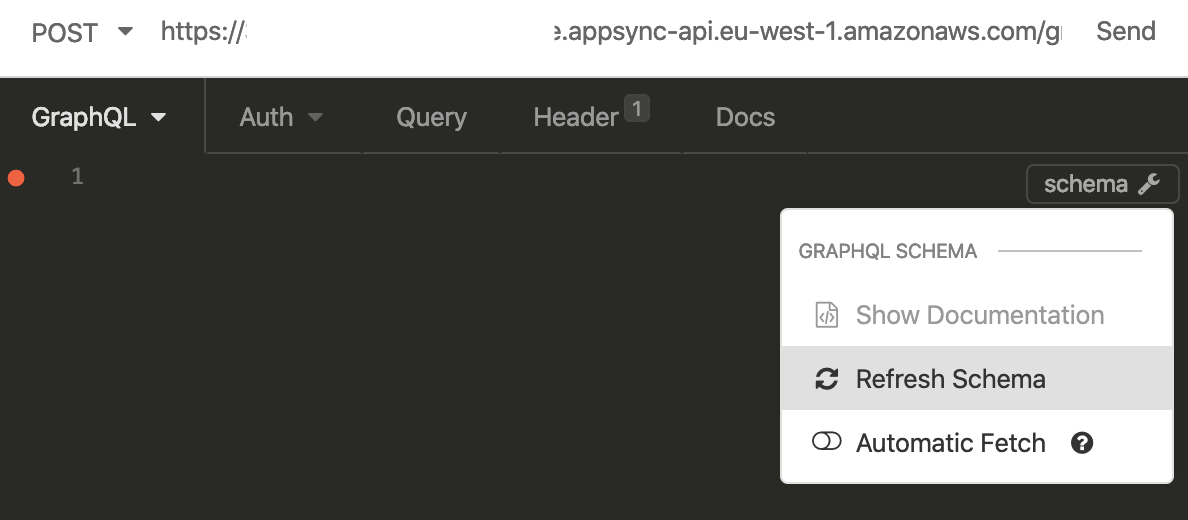
After which you’re free to browse the API schema (Schema > Show Documentation), write queries, submit them, and see the way the payloads are passed around and what headers are expected/received.
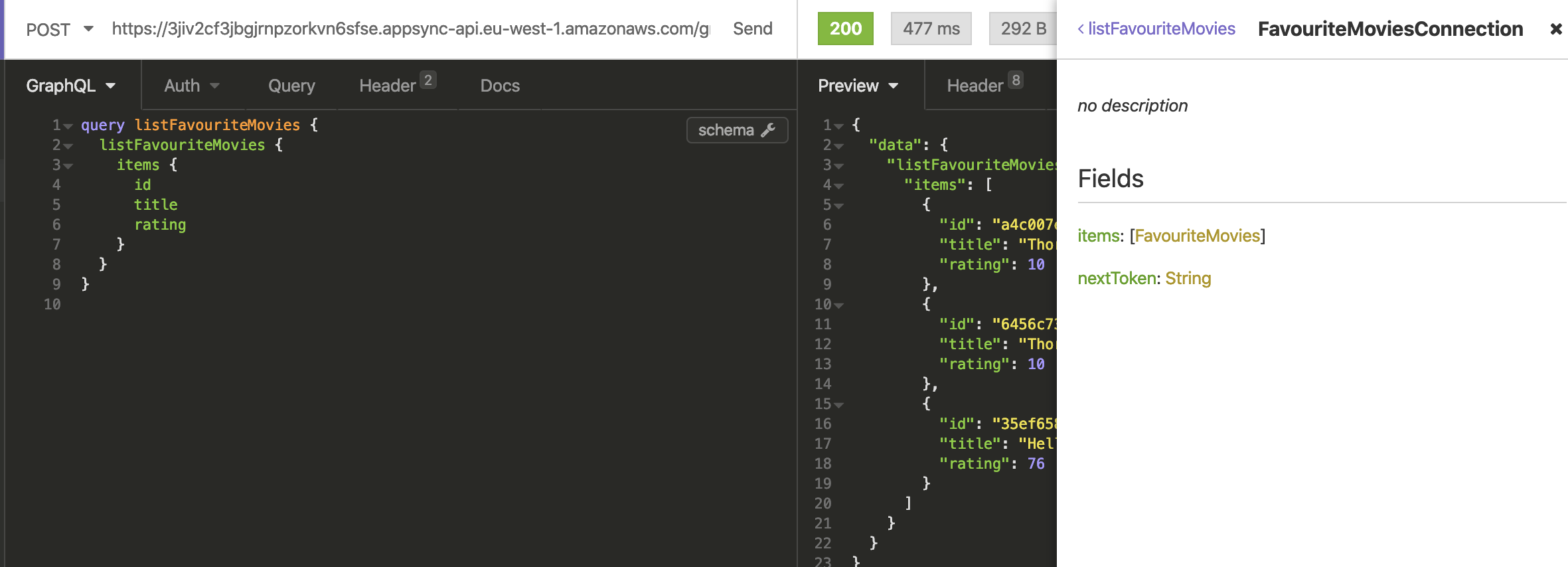
Further Reading
If you want to learn more about AppSync’s capabilities I suggest you check out this introductory video from AWS here: